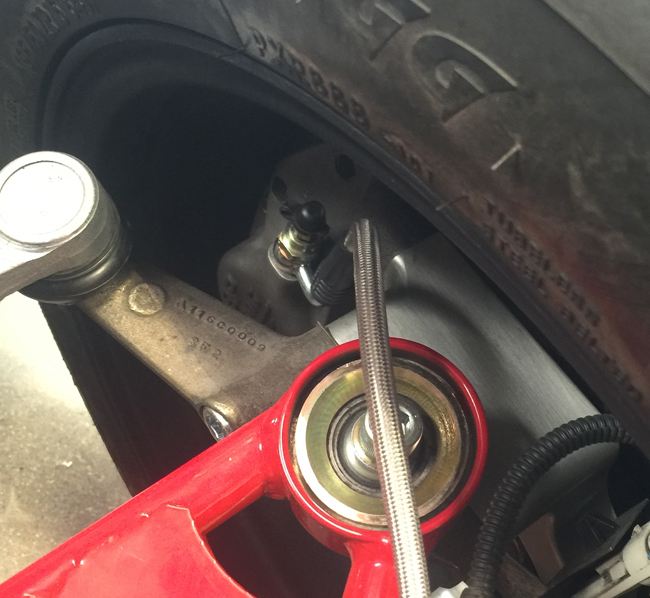So how often do I really need to change my oil and filter? We attempt to shed some light on this subject in this blog post.
Oil is the lifeblood of an engine. As a vehicle operates, its engine oil accumulates contaminants ranging from metal shavings to dirt. The oil filter’s role is to capture and hold these impurities, ensuring the engine receives clean, optimal-performing lubrication. For this reason, regular replacement of the oil filter is crucial. In this report, we focus on the importance of oil filter change intervals for the Lotus Elise & Exige equipped with the Toyota 2ZZGE engine. But the principles apply to most cars - especially those with 4 bangers.
Why Regular Oil Filter Changes Are Crucial
1. Contaminant Capture: As the oil circulates, it picks up various contaminants. Over time, as the filter traps these impurities, it can become clogged, potentially allowing dirty oil to bypass it and circulate back into the engine.
2. Maintaining Oil Flow: A clogged filter can restrict oil flow. In engines like the 2ZZGE, which rely on oil for both lubrication and for actuating the variable valve timing system, compromised flow can significantly impact performance and lead to potential damage.
3. Engine Longevity: Regular filter changes help maintain engine health by ensuring that clean oil lubricates and cools the internal components. Dirty oil can lead to premature wear and potential engine failures.
Recommended Intervals
While general advice for modern engines suggests changing the oil filter with every oil change (typically every 5,000 to 7,500 miles), the specific requirements can vary based on driving conditions and style.
For the Lotus Elise & Exige, which often sees spirited driving or even track use, more frequent changes might be beneficial. Lotus, in its official documentation, generally recommends an oil and oil filter change every 7,500 miles or annually for regular driving conditions. See the following chart: HERE
Factors Affecting Change Intervals
1. Driving Style: Engines subjected to hard driving, frequent short trips, or prolonged idling might benefit from shorter filter change intervals.
2. Oil Quality: High-quality synthetic oils, like Motul, often offer better protection and longer life than conventional oils, potentially allowing for longer intervals between changes.
3. Environmental Conditions: Driving in dusty or dirty environments can lead to quicker filter clogging, necessitating more frequent changes.
For those driving in harsher conditions or using their car for performance-oriented drives frequently, a more conservative interval of 3,000 to 5,000 miles is often suggested by experts and enthusiasts. If you are racing for the checkered flag, we would suggest an oil change after every other race weekend though we would leave the oil filter in place. Why? Keep reading....
The Intricacies of Oil Filter Operation: A Brief Overview
I spent time in the automotive filtration market as a media supplier to various OEM filter manufacturers. During these years I learned a fair amount about how an oil filter actually works.
An oil filter's primary role is to ensure clean oil circulates within an engine, safeguarding against premature wear and potential damage. At the heart of this mechanism is the filter media, often made from synthetic fibers or pleated paper, designed to trap and hold contaminants as oil passes through.
As oil courses through the engine, it collects various impurities, from microscopic metal shavings to larger debris. The oil filter acts as a barrier, catching these contaminants in its media. Interestingly, a slightly dirty filter can, paradoxically, increase its filtration efficiency. So a new filter will actually catch less than one that is slightly dirty. Why does matter? Keep reading...
As contaminants accumulate on the surface, they form a layer that can aid in trapping even smaller particles. This phenomenon is termed "filter cake." While this initially enhances the filter's effectiveness, there's a tipping point. Over time, as the filter becomes more clogged, it can restrict oil flow, which may lead to filter bypass valve opening, allowing unfiltered oil into the engine.
Since a normal oil change in these cars does not drain 100% of the oil (oil coolers and lines), some dirty oil will remain in the system. I advocate leaving the oil filter in place for twice the interval that you choose to do for the oil. Though I do recommend that the filter be changed at a max of 7,500 regardless.
Conclusion
While the general guideline for the Elise & Exige suggests an oil filter change every 7,500 miles, real-world conditions, especially spirited driving, might require more frequent changes. The filter can also be considered separately with intervals that are twice as long but a mazimum of 7,500. Owners should always consult their vehicle's manual, consider their driving habits, and consult with specialists or trusted mechanics to determine the best maintenance schedule for their specific situation.



















































